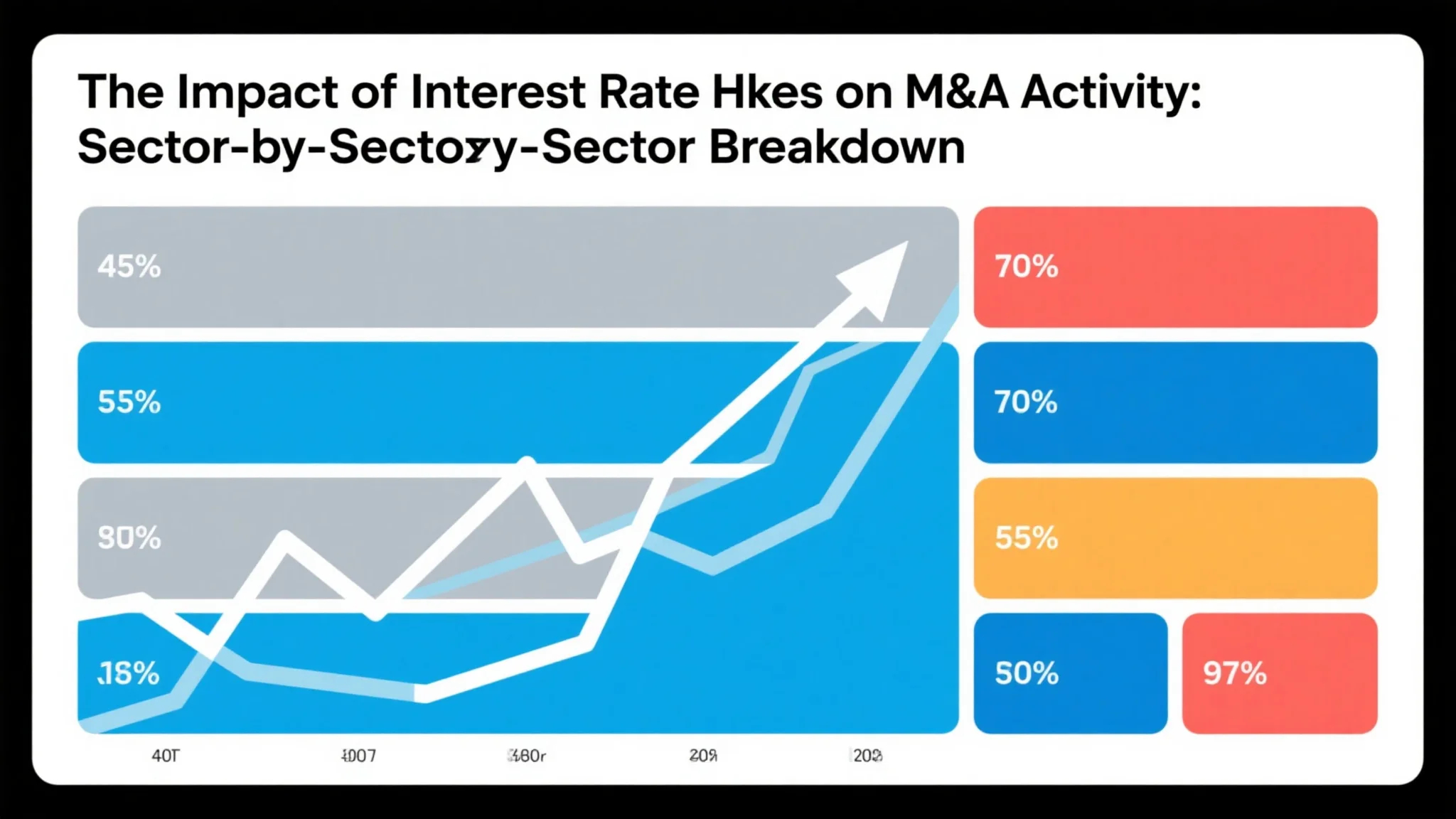When contemplating the sale of your business, understanding the intricate landscape of investment banking fees becomes paramount to making informed financial decisions. The complexity of modern M&A fee structures can significantly impact your net proceeds from a transaction, making it essential to comprehend every component before engaging professional services. Investment banks serve as crucial intermediaries in business sales, providing expertise in valuation, market positioning, buyer identification, and transaction execution. However, their compensation models vary dramatically across different types of engagements, transaction sizes, and market conditions. The traditional fee structure typically includes a combination of retainer fees, success fees, and various expense reimbursements, each serving distinct purposes in the advisory relationship. Retainer fees, often called engagement fees, represent upfront payments that secure the investment bank’s commitment to your transaction while covering initial due diligence and marketing preparation costs. These fees typically range from $25,000 to $200,000 for middle-market transactions, depending on the complexity and anticipated timeline of the sale process. Success fees, conversely, align the investment bank’s interests with yours, as they receive compensation only upon successful completion of the transaction. The Lehman Formula, though somewhat outdated, still influences many fee negotiations, suggesting 5% on the first million, 4% on the second million, 3% on the third million, 2% on the fourth million, and 1% on amounts exceeding five million dollars. However, modern fee structures have evolved significantly, with many banks now employing sliding scales that decrease as transaction values increase, reflecting economies of scale in larger deals. Understanding these nuances helps business owners negotiate more effectively and budget appropriately for business sale costs. The selection of an investment bank should never be based solely on fee considerations, as the quality of service, industry expertise, and track record often justify premium pricing. Boutique investment banks may offer more personalized service and industry specialization, while bulge bracket firms provide extensive resources and global reach. The fee structure discussion should occur early in the selection process, with clear documentation of all potential charges, including administrative costs, legal fees, and marketing expenses that might arise during the transaction process.
Comprehensive Analysis of Investment Banking Compensation Models
The evolution of investment banking fees reflects the increasing sophistication of the mergers and acquisitions marketplace, where compensation structures have adapted to address the diverse needs of business owners across various industries and transaction sizes. Modern investment banks employ multiple fee models, each designed to optimize alignment between advisor and client interests while ensuring adequate compensation for the extensive resources required to execute successful transactions. The most prevalent structure combines a modest retainer fee with a substantial success fee, creating a balanced approach that demonstrates the bank’s commitment while maintaining strong incentives for transaction completion. Retainer fees serve multiple purposes beyond simple upfront compensation, including covering the costs of comprehensive business analysis, market research, preparation of marketing materials, and initial buyer outreach efforts. These fees typically represent a small fraction of the total compensation but provide investment banks with necessary working capital to dedicate senior resources to your transaction from the outset. The success fee component, usually calculated as a percentage of the final transaction value, varies significantly based on deal size, complexity, and competitive dynamics. For transactions below $10 million, success fees often range from 8% to 12%, reflecting the higher relative costs of executing smaller deals and the limited economies of scale available to investment banks. Mid-market transactions, typically defined as those between $10 million and $500 million, generally command success fees ranging from 3% to 8%, with the percentage decreasing as transaction values increase. Large-cap transactions exceeding $500 million often feature success fees below 3%, sometimes dropping to 1% or less for billion-dollar deals, as the absolute dollar amounts provide adequate compensation despite lower percentage rates. Beyond basic success fees, many M&A fee structures include various enhancement mechanisms designed to reward exceptional performance or address specific transaction challenges. Break-up fees protect investment banks when transactions fail due to buyer financing issues or other factors beyond their control, typically ranging from 25% to 50% of the success fee. Minimum fee provisions ensure investment banks receive adequate compensation even if transaction values fall below initial expectations, while maximum fee caps provide business owners with cost certainty in highly successful transactions. Some structures include performance bonuses tied to achieving valuation targets above predetermined thresholds, creating additional incentives for investment banks to maximize transaction value. The timing of fee payments also varies, with some banks requiring quarterly retainer payments throughout the engagement period, while others prefer larger upfront payments followed by success fee settlements at closing.

Understanding the nuances of expense reimbursement policies becomes crucial when evaluating total business sale costs, as these additional charges can accumulate significantly throughout the transaction process. Investment banks typically seek reimbursement for out-of-pocket expenses incurred during the engagement, including travel costs for management presentations, legal fees for transaction documentation, accounting fees for financial analysis, and marketing expenses for buyer outreach efforts. Travel expenses can be substantial, particularly for businesses located in secondary markets or when targeting international buyers, with costs including airfare, hotels, meals, and ground transportation for multiple team members across extended periods. Legal expenses often represent the largest category of reimbursable costs, as investment banks engage specialized counsel for transaction documentation, regulatory compliance, and due diligence coordination. These legal fees can range from $50,000 to $500,000 or more, depending on transaction complexity, regulatory requirements, and the number of potential buyers involved in the process. Marketing expenses encompass the creation of comprehensive information memoranda, financial models, management presentations, and data room preparation, along with costs associated with buyer identification and outreach efforts. Some investment banks include these marketing costs within their retainer fees, while others treat them as separate reimbursable expenses, making it essential to clarify these arrangements during initial negotiations. Administrative expenses, though typically smaller in absolute terms, can include costs for document reproduction, courier services, conference calls, and various technology platforms used throughout the transaction process. The cumulative impact of these expenses often ranges from $100,000 to $1 million or more for complex transactions, representing a significant component of total transaction costs that business owners must factor into their financial planning. Negotiating expense caps or requiring pre-approval for major expenditures helps control these costs while maintaining necessary flexibility for investment banks to execute their responsibilities effectively. Some business owners prefer all-inclusive fee structures that eliminate expense reimbursements in favor of slightly higher success fees, providing greater cost predictability and simplifying the financial relationship with their investment bank.
Strategic Considerations for Optimizing Investment Banking Relationships
The strategic selection and management of investment banking relationships extends far beyond simple fee negotiations, encompassing a comprehensive evaluation of capabilities, cultural fit, and alignment of interests that ultimately determines transaction success. Sophisticated business owners recognize that the lowest-cost provider rarely delivers optimal results, as the quality of investment banking services directly correlates with transaction outcomes, including final valuation, buyer quality, and deal certainty. The most effective approach involves evaluating potential investment banks across multiple dimensions, including industry expertise, transaction track record, team composition, and fee structure, while maintaining focus on maximizing net proceeds rather than minimizing advisory costs. Industry specialization often justifies premium pricing, as investment banks with deep sector knowledge bring invaluable insights regarding market dynamics, buyer preferences, valuation methodologies, and transaction structuring alternatives that generalist firms cannot match. These specialized banks maintain extensive networks of industry contacts, including strategic buyers, financial sponsors, and other intermediaries who regularly participate in sector transactions. Their understanding of industry-specific regulatory requirements, accounting standards, and operational considerations enables more effective positioning of your business and more accurate valuation guidance throughout the process. The track record evaluation should encompass both quantitative metrics, such as the number and size of completed transactions, and qualitative factors, including client references, deal complexity, and market conditions during previous engagements. Recent transaction experience proves particularly valuable, as market conditions, buyer preferences, and regulatory environments evolve rapidly, making historical performance from several years ago less relevant to current market dynamics. Team composition analysis involves understanding which professionals will actually work on your transaction, their experience levels, and their availability throughout the engagement period. Senior banker involvement often correlates with better outcomes, but many firms assign junior staff to handle day-to-day responsibilities while senior professionals focus on strategic guidance and buyer relationships. Clarifying team structure, communication protocols, and escalation procedures helps ensure appropriate attention and resources throughout the transaction timeline. The cultural fit assessment, though subjective, significantly impacts the working relationship quality and ultimate transaction success, as business sales involve extensive collaboration, sensitive information sharing, and high-stress decision-making under tight deadlines.
Fee negotiation strategies should focus on creating alignment between investment bank compensation and business owner objectives, rather than simply minimizing costs, as poorly structured fee arrangements can inadvertently create conflicts of interest or inadequate service levels. The most effective fee structures provide investment banks with sufficient upfront compensation to dedicate appropriate resources while maintaining strong incentives for maximizing transaction value and ensuring successful completion. Retainer fee negotiations should consider the investment bank’s upfront costs, including team allocation, market research, and marketing material preparation, while avoiding excessive payments that might reduce the bank’s motivation to complete the transaction quickly. Success fee discussions should emphasize value creation rather than cost minimization, with consideration for performance bonuses tied to achieving valuation targets above predetermined thresholds. Some business owners negotiate tiered success fee structures that provide higher percentage compensation for transaction values exceeding specific benchmarks, creating additional incentives for investment banks to maximize proceeds. Alternatively, sliding scale structures that decrease percentage fees as transaction values increase can provide cost efficiency for highly successful transactions while maintaining adequate compensation for investment banks. Minimum fee provisions protect investment banks against unexpectedly low valuations while providing business owners with cost certainty, typically set at levels that ensure reasonable compensation for the investment bank’s efforts regardless of final transaction value. Maximum fee caps, though less common, can provide business owners with cost protection in exceptionally successful transactions, though they may reduce investment bank motivation to achieve the highest possible valuations. The timing of fee payments affects cash flow for both parties, with some structures requiring larger upfront payments to demonstrate business owner commitment, while others minimize initial costs in favor of success-based compensation. Expense reimbursement negotiations should establish clear guidelines for allowable costs, approval procedures for major expenditures, and caps on total reimbursable amounts to prevent unexpected cost escalation. Some business owners prefer all-inclusive fee structures that eliminate expense reimbursements entirely, providing greater cost predictability while slightly increasing success fees to compensate investment banks for absorbed costs.
The long-term relationship perspective recognizes that investment banking engagements often extend beyond single transactions, encompassing ongoing strategic advice, market intelligence, and potential future transaction opportunities that justify investing in high-quality advisory relationships. Successful business owners frequently engage investment banks for multiple transactions throughout their careers, including acquisitions, divestitures, recapitalizations, and strategic partnerships, making the selection decision particularly important for building lasting professional relationships. The reputation and market standing of your chosen investment bank can significantly impact buyer perceptions, with well-regarded firms often attracting higher-quality buyers and commanding greater respect throughout the transaction process. This reputational benefit can translate into improved transaction terms, faster execution timelines, and reduced execution risk, often justifying premium fee structures through enhanced transaction outcomes. The global reach and resources of larger investment banks provide advantages for businesses seeking international buyers or requiring complex transaction structures, while boutique firms often offer more personalized service and specialized industry expertise. The decision between these alternatives should consider your specific transaction objectives, timeline constraints, and the importance of various service elements to your particular situation. Post-transaction relationships with investment banks can provide ongoing value through market intelligence, strategic advice, and assistance with future corporate development initiatives, making the selection decision important beyond the immediate transaction. Many investment banks offer reduced fees for repeat clients or provide ongoing advisory services at preferential rates, recognizing the value of long-term client relationships. The integration of investment banking relationships with other professional service providers, including attorneys, accountants, and consultants, requires coordination and communication that experienced investment banks manage more effectively. Understanding these broader relationship dynamics helps business owners make more informed decisions about investment bank selection and fee structure negotiations, ultimately leading to better transaction outcomes and more valuable long-term advisory relationships. The investment in high-quality investment banking services often pays dividends through improved transaction execution, higher valuations, and reduced execution risk, making the fee structure discussion one component of a broader strategic decision about professional service provider selection and relationship management.



